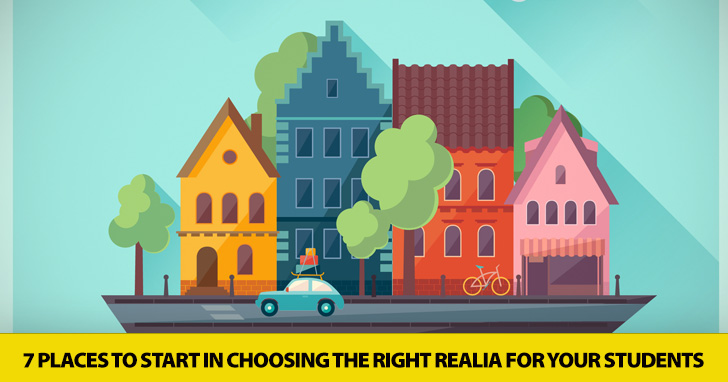Keeping It Real: 7 Places to Start in Choosing the Right Realia for Your Students


Comics are not just for little kids anymore. In fact, today’s graphic novel can fill many useful roles in the modern ESL classroom. Their minimal text paired with interesting illustrations aid comprehension and give students who may not be able to read a novel the confidence that comes with useful language skills. With a little imagination, these illustrated series can become some of your most purposeful tools while getting your students excited about reading and writing!
Here are some ideas you can use today for integrating graphic novels in the ESL classroom.

Because graphic novels have less text and more illustrations than a traditional novel, they can be a ready resource for getting your ESL students interested in reading in English. There will be less lengthy description and more focus on plot and dialogue because the amount of text is so limited. Your students will feel a sense of accomplishment when they finish a complete book even if it has significantly less pros than a traditional novel with the same number of pages.
Another advantage to working with graphic novels is the comprehension clues in the illustrations. The pictures will aid in comprehension, and your students will be more comfortable inferring the meaning of new vocabulary words. They will run to the dictionary less often and take steps to true language acquisition.
Reading the dialogue in graphic novels is also a fun way to get in some pronunciation and intonation practice with your ESL students. Have your students read the dialogue between characters on one or a few pages. In addition, because so much action happens on each page, the dialogue in graphic novels may supply a rare opportunity to talk about stress and volume in natural English speech. Make sure your students are reading with passion when they practice the dialogue in class.
Graphic novels can also be a natural place to connect the native culture of your students with their English language studies. Many popular graphic novels are translations from other languages, and these original pieces are often very popular with young people in foreign cultures. If you can find English translations of graphic novels originally written in Japanese or Korean, your students may feel more comfortable with the material and the cultural implications of the story itself.
You can also find graphic novel interpretations of classic works of fiction that would otherwise be too difficult for your class to digest. Graphic novels are available for such classics as the Grimm brothers’ fairy tales, Frankenstein, Moby Dick and countless others. The material is even better for your class when the story is something familiar. That way the emphasis is on language use and comprehension rather than the story or plot. Of course, it never hurts to read something with action and drama!
Today, the subjects addressed by graphic novels are as broad as your imagination. Because of this, you can use graphic novels to supplement the content-based material you are covering in your class. For example, if you find yourself teaching about World War II in a history class, you may want to include the graphic novel Maus in your curriculum. Other theme units will coordinate with other graphic novels. If you need some direction, ask the clerk at your local comic book store for some advice but always preread the material before giving it to students.
Pages from a graphic novel can serve as a blank canvas for writing original dialogue as well. Select a story that is popular with your students or choose one that touches on content you are covering in your class. Then make copies of one or more pages with the dialogue whited out but the speech bubbles remaining. Either individually or in pairs, have your students write dialogue that fills each of the speech bubbles and is appropriate for the illustrations that are provided. You can have fun with your class by posting the completed dialogues and asking your students to vote for the one they think makes the best story. Then show them the original dialogue and have them compare what the author wrote with what they and their classmates wrote.
You can also leave the original dialogue in place and cut the frames apart from one another. Give pairs or small groups of students each a set of the frames and challenge them to use the information given there to sequence the panels. They will have to use the context of the language as well as the pictures to find the correct order of the panels.
If you are looking for a way to elicit more original material from your students, you can take photocopied pages from graphic novels, with or without their original dialogue, and give them to your students as story starters. Starting with the pictures and possibly the dialogue, have your students retell the story using paragraph form. They can write descriptions of what they see in the pictures and detail the action that is happening in the frames. Again, this activity helps focus more on language and less on content since the story is already provided.
You can take the inspiration a step further and have your students create their own villains and heroes modeled after the ones they read about in the graphic novels, or have them create nemesis to combat the characters already in print. Either way, your students will have to think of the strengths and weaknesses their hero or villain possesses and what his greatest desire is. They can then use those characters in their original fiction or graphic novel.
So the next time you are choosing a book from the shelf for your class reading project, pick up a graphic novel and see where your imagination will take you.